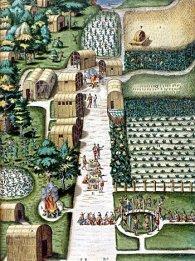 The geological, geographical, & biotic setting:
The geological, geographical, & biotic setting: The geological, geographical, & biotic setting:
The geological, geographical, & biotic setting:
Tectonics, evolution, isolation and sources of the biological wealth of the Antilles & Mesoamerica.
by
J. Siry
![]()
Islands | Invasions | European Feudalism | 3 problem categories of to define | Geophysical realities | course study guide
![]()
-- defining the shape of the Indies: a New World Mediterranean Sea.
Intertropical convergence’s annual motion north & south brings seasonal rain.
A. Two kind of rocks:
- biogenic
- coral, coralline
- formed from living coral polyps that are fossilized
- tectonic or generated by the earth
- igneous or pyroclastic,
- lava, from volcanic eruptions
B. geomorphology of the greater & lesser Antilles,
Caribbean & Nazca Plates moving such that
- the Caribbean basin submarine rocks used to be part of the Pacific Ocean
- transverse faults form the greater Antilles mountains’ (catch rainfall) watershed.
- subduction zone generated volcanic mountain chains of the lesser Antilles.
C. the mountain or cordilleran boundary creates barriers ot animal and plant migrations versus coastal plains that as highways for migration produced a variety of ecological systems.
"The lay of the islands"
core
Mexico & the Andean Cordillera (gold and silver): altitudinal zonation.
Valleys, Tenochtitlan, (chinampa) Aztecs as a trail to the NA Southwest.
periphery
Greater Antilles: Ciboney & Taino, inland and maritime cultural diversity.
Lesser Antilles: Taino & Carib, maritime cultures from South America.

geography as destiny, “nature” is a harsh task-master as it sets rigid conditions.
Coasts as boundaries or bridges?
Pump of the Gulf Stream: North Atlantic gyre (clockwise currents).
West Indies as the doorway, to the Americas; a staging ground, incubator.
acclimation of Euro-fauna and flora required “seasoning” in the Antilles.
sugar islands as a source of investment wealth fed the industrial revolution.
Biological -- Virgin soil diseases & the apparent absence of communities.
Whales & Marine Turtles, Mangroves, & fisheries from the Canary Isles to W.I.
Manioc, corn, & vegetable staples fed invaders with immunity to Eurasian diseases
Isolation, endemism and exotic introductions, not religion explains Euro-successes.
genetic variability, today, explains the outcomes of the Columbian Exchange.
Social -- European cultural dominance (language) & Amerindians staple foods.
Sugar, Encomienda system, communal water rights, cattle, horses, swine, wheat & oats.
European Feudalism:
Indian labor after a precipitous decline was insufficient to meet the needs.
African slaves, 25 million transported in 250 years.(conservative est.)
Context of settling the Americas
depopulation coupled with forced migration from west & southern Africa
land grants to lesser nobility in exchange for service and a percentage return.
trade monopolies (mercantilism) given to merchant adventurers (companies).
ethnic identity of Caribbean & Latin American peoples.
A. Crosby, Germs, Seeds and Animals. amalgamation was the greatest revolution of all.
Arawaks & Columbus: Two worlds collided, partly fused to enrich Europe.
Plantations, mining, & commerce for export all emerged w/in 50 years.
Cortez & Pizarro, domestic animals & diseases helped conquests.
African slavery was based on Portuguese trade on gold & ivory coasts.
Islands | Invasions | European Feudalism | 3 problem categories of to define | Geophysical reality